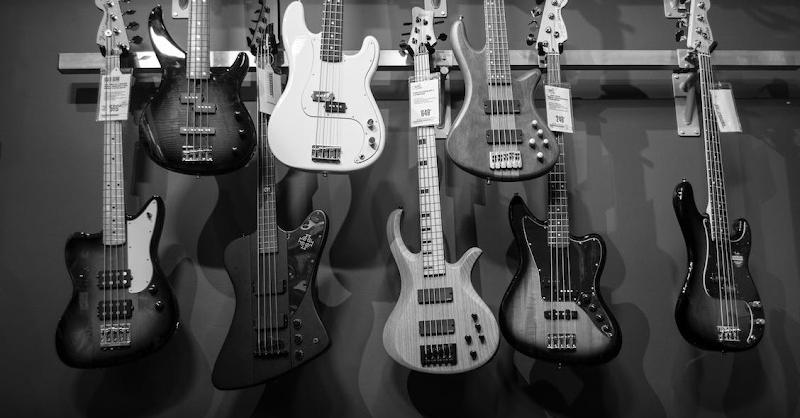The bass guitar, the low-end thrumming heart of countless musical genres, is both a surprisingly simple and surprisingly complex instrument. While its basic function might seem straightforward – to produce low-pitched notes – understanding the intricate interplay of its various parts is key to not only playing the instrument effectively but also caring for it properly. So, whether you’re a seasoned bassist or a curious beginner, this blog delves into the anatomy of a bass guitar, exploring its parts, their functions, and essential maintenance tips.
The Body:
The foundation of the instrument, the body, comes in various shapes and sizes, with the most common being the Fender Precision Bass (P-Bass) and the Fender Jazz Bass (J-Bass) designs. It’s crafted from tonewoods like ash, alder, mahogany, or even exotic options like koa or wenge. The choice of wood can subtly influence the instrument’s sound, but the body’s primary function is to house the other crucial components and provide a comfortable playing experience. Some bass guitars, like the acoustic bass guitar, do away with a solid body altogether, relying on a hollow chamber design similar to acoustic guitars, resulting in a warmer, more nuanced sound.
The Neck:
Extending from the body, the neck is a long, slender piece of wood topped with a fingerboard, typically made from rosewood or maple. Embedded into the fingerboard are frets, thin metal strips that mark the playable positions on the instrument. The neck’s scale length, the distance between the nut and the bridge, determines the string tension and the overall playing feel. A longer scale length, like on a Fender Jazz Bass, offers more tension and a brighter tone, while a shorter scale length, common on Gibson basses, provides lower tension and a warmer sound.
The Hardware:
The hardware of a bass guitar refers to the metal components that contribute to its functionality and sound. The tuning machines, located at the headstock, allow you to adjust the string tension and pitch. The nut, a small piece of bone or plastic at the beginning of the neck, holds the strings in place and ensures proper string spacing. The bridge, located at the body’s end, anchors the strings and transfers their vibrations to the body. Different bridge designs, like the fixed bridge or the tremolo bridge, can affect the instrument’s sustain and vibrato capabilities. Finally, the tailpiece, located behind the bridge, holds the ball ends of the strings and can fine-tune the intonation.
The Electronics:
While the basic components mentioned above are essential for any bass guitar, electric bass guitars, the most common type, incorporate additional electronic elements to amplify and shape the sound. The pickups, usually located near the bridge and sometimes in the middle of the body, are magnets wrapped in wire that convert the vibrations of the strings into electrical signals. The signal then travels to the controls, typically consisting of a volume knob and one or more tone knobs, which allow you to adjust the overall loudness and brightness of the sound. Finally, the signal reaches the output jack, where you connect your instrument cable to an amplifier for further amplification and tonal shaping.
Maintenance:
Taking proper care of your bass guitar is essential to ensure its longevity and optimal playing experience. Here are some essential maintenance tips:
- Cleaning: Regularly wipe down the body and fingerboard with a soft, dry cloth to remove dust and grime. Use a dedicated fretboard cleaner and conditioner for the fingerboard to prevent drying and cracking.
- String Changes: Replace your strings regularly, depending on how often you play and the desired tone. New strings will sound brighter and have better intonation.
- Intonation: Regularly check the intonation of your instrument, ensuring each string rings true at every fret. This process involves adjusting the bridge saddles.
- Truss Rod Adjustments: The truss rod, a metal rod inside the neck, helps adjust the neck’s relief, the curvature of the fingerboard. Adjustments should only be done by a qualified technician to avoid damaging the instrument.
- Storage: Store your bass guitar in a cool, dry place away from direct sunlight and extreme temperatures. When not in use, loosen the strings slightly to reduce tension on the neck.
By understanding the anatomy of your bass guitar and following these simple maintenance tips, you can ensure your instrument stays in top playing condition for years to come, allowing you to explore the world of low-end grooves and become an integral part of the musical tapestry.
